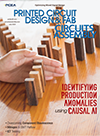MEMS Market to Hit $12.5b by 2010
Published: 20 January 2006
by Mike Buetow
Sales of MEMS devices and production equipment worldwide was worth an estimated $5 billion in 2005, and will increase to $12.5 billion through 2010, an average annual growth rate of more than 20%, according to a soon-to-be-released report from Business Communications.
Microfluidic MEMS was the largest segment of the MEMS market in 2004, with a market share of over 44%, reflecting large sales of microfluidic MEMS inkjet heads, which totaled $1.8 billion or almost 40% of the global market in 2004.
Optical MEMS accounted for nearly 20% of the MEMS market in 2004, with MEMS pressure sensors having an 18% share.
Projected AAGRs in the three largest MEMS segments are generally lower than those of other types of MEMS and, as a result, these segments are expected to lose market share between 2004 and 2010.
Accelerometers have a projected AAGR of 45% between 2005 and 2010, and are expected to be the second largest MEMS market segment (after microfluidics) by 2010, with over 22% of the market. Gyroscopic MEMS and particularly RF (radio frequency) MEMS are also projected to gain significant market share between 2004 and 2010.
Life science applications dominated the MEMS market in 2004, with over 46% of the market. Automotive and consumer product applications accounted for most of the rest of the market, with shares of 27% and 17% respectively.
Life sciences, automotive, and consumer product applications should still account for the bulk of the MEMS market in 2010, collectively accounting for over 78% of the market.
Other MEMS application segments expected to grow appreciably in market share include telecommunications (whose market share is expected to grow from 4% in 2004 to 11% in 2010) and information technology (0.1% of the market in 2004 vs. 5.1% in 2010).
Press Releases
- Scanfil and Etteplan deepen their strategic partnership into production testing
- NOTE receives order worth 132 MSEK and expands collaboration with customer within Security & Defence
- Kitron Strengthens Order Backlog with EUR 11 Million Contract for Defense Communication
- ZTEST Electronics Inc. Announces Transition to the OTCID Market
POPULAR
- Editorial Contributions
- Smarter SMT Starts at the Reel: How Splicing Kits are Powering Efficiency
- Verifying PCBA Cleanliness with Ion Chromatography
- Factors Contributing to Solder Ball Formation: A Guide
- Systematic Troubleshooting in Electronics Assembly: A Case Study in Solder Balling and Process Optimization







